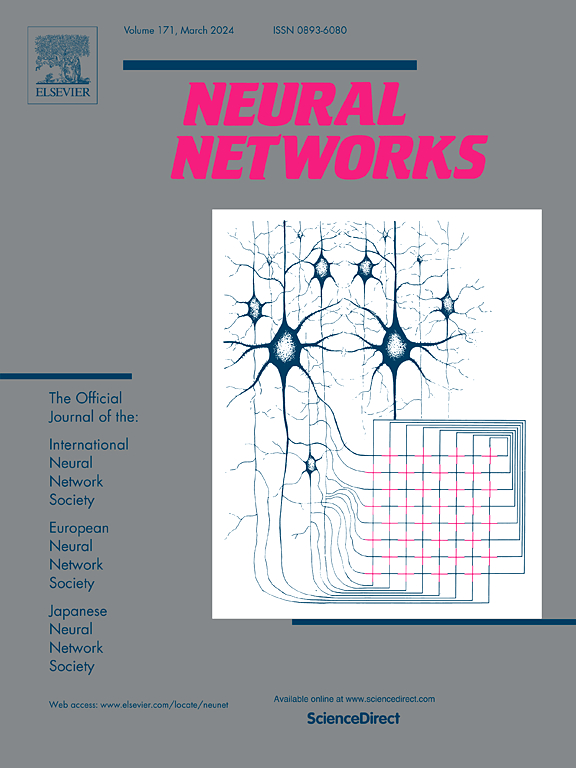High-order diversity feature learning for pedestrian attribute recognition
IF 6
1区 计算机科学
Q1 COMPUTER SCIENCE, ARTIFICIAL INTELLIGENCE
引用次数: 0
Abstract
Pedestrian attribute recognition (PAR) involves accurately identifying multiple attributes present in pedestrian images. There are two main approaches for PAR: part-based method and attention-based method. The former relies on existing segmentation or region detection methods to localize body parts and learn corresponding attribute-specific feature from the corresponding regions, where the performance heavily depends on the accuracy of body region localization. The latter adopts the embedded attention modules or transformer attention to exploit detailed feature. However, it can focus on certain body regions but often provide coarse attention, failing to capture fine-grained details, the learned feature may also be interfered with by irrelevant information. Meanwhile, these methods overlook the global contextual information. This work argues for replacing coarse attention with detailed attention and integrating it with global contextual feature from ViT to jointly represent attribute-specific regions. To tackle this issue, we propose a High-order Diversity Feature Learning (HDFL) method for PAR based on ViT. We utilize a polynomial predictor to design an Attribute-specific Detailed Feature Exploration (ADFE) module, which can construct the high-order statistics and gain more fine-grained feature. Our ADFE module is a parameter-friendly method that provides flexibility in deciding its utilization during the inference phase. A Soft-redundancy Perception Loss (SPLoss) is proposed to adaptively measure the redundancy between feature of different orders, which can promote diverse characterization of features. Experiments on several PAR datasets show that our method achieves a new state-of-the-art (SOTA) performance. On the most challenging PA100K dataset, our method outperforms previous SOTA by 1.69% and achieves the highest mA of 84.92%.
行人属性识别的高阶多样性特征学习
行人属性识别(PAR)涉及对行人图像中存在的多个属性进行准确识别。PAR有两种主要的方法:基于部分的方法和基于注意的方法。前者依靠现有的分割或区域检测方法对人体部位进行定位,并从相应区域学习相应的属性特征,其性能很大程度上依赖于身体区域定位的准确性。后者采用嵌入式注意模块或变形注意来挖掘细节特征。然而,它可以专注于某些身体区域,但往往提供粗糙的注意力,无法捕捉到细粒度的细节,学习到的特征也可能被无关信息干扰。同时,这些方法忽略了全局上下文信息。本研究主张用详细注意取代粗糙注意,并将其与ViT的全局上下文特征相结合,共同表示属性特定区域。为了解决这个问题,我们提出了一种基于ViT的高阶多样性特征学习(HDFL)方法。我们利用多项式预测器设计了一个特定属性的详细特征探索(ADFE)模块,该模块可以构造高阶统计量并获得更细粒度的特征。我们的ADFE模块是一种参数友好的方法,在推理阶段提供了决定其使用的灵活性。提出了一种软冗余感知损失(SPLoss)自适应度量不同阶数特征之间的冗余度,从而促进特征的多样化表征。在多个PAR数据集上的实验表明,我们的方法达到了新的最先进的(SOTA)性能。在最具挑战性的PA100K数据集上,我们的方法优于以前的SOTA 1.69%,达到最高的mA为84.92%。
本文章由计算机程序翻译,如有差异,请以英文原文为准。
求助全文
约1分钟内获得全文
求助全文
来源期刊

Neural Networks
工程技术-计算机:人工智能
CiteScore
13.90
自引率
7.70%
发文量
425
审稿时长
67 days
期刊介绍:
Neural Networks is a platform that aims to foster an international community of scholars and practitioners interested in neural networks, deep learning, and other approaches to artificial intelligence and machine learning. Our journal invites submissions covering various aspects of neural networks research, from computational neuroscience and cognitive modeling to mathematical analyses and engineering applications. By providing a forum for interdisciplinary discussions between biology and technology, we aim to encourage the development of biologically-inspired artificial intelligence.
 求助内容:
求助内容: 应助结果提醒方式:
应助结果提醒方式:


